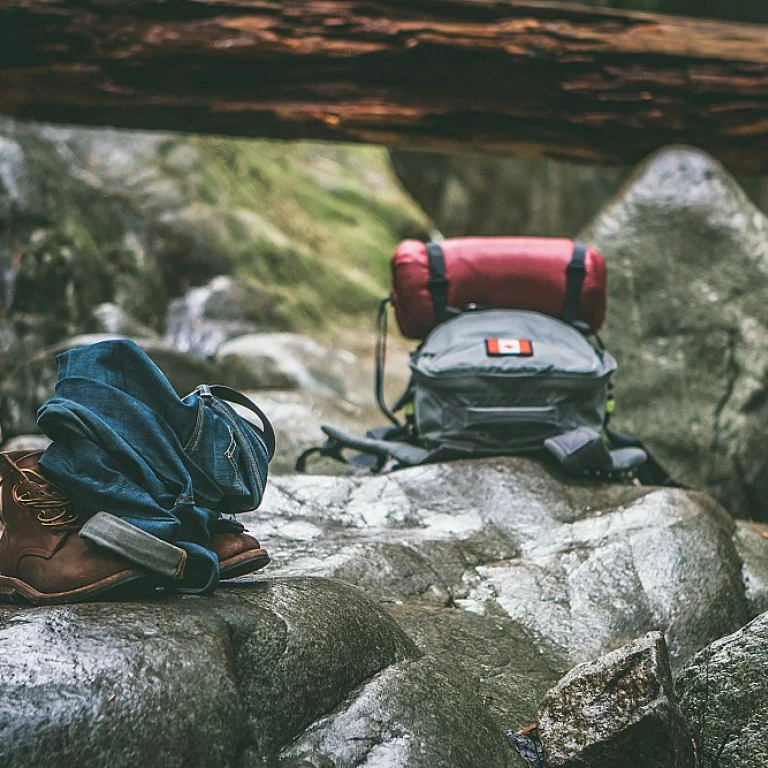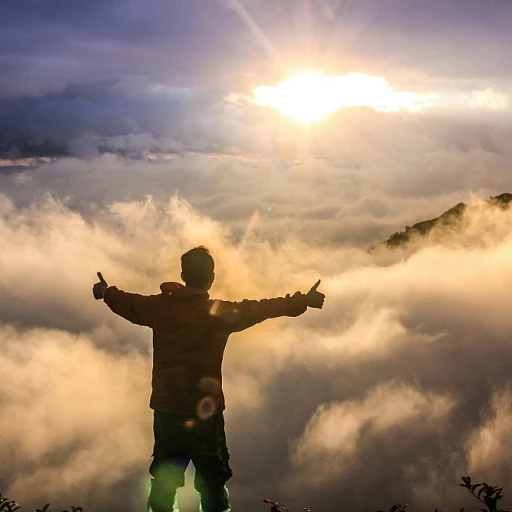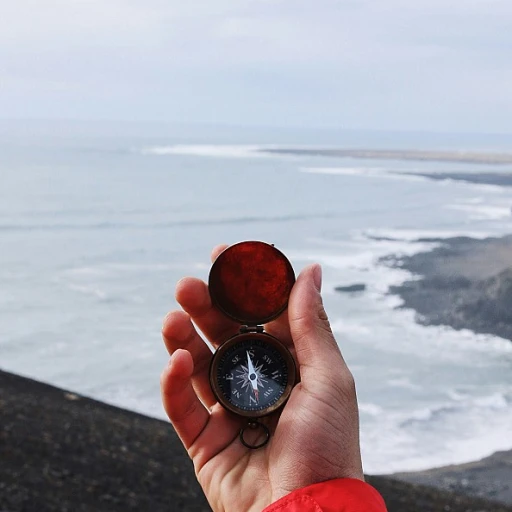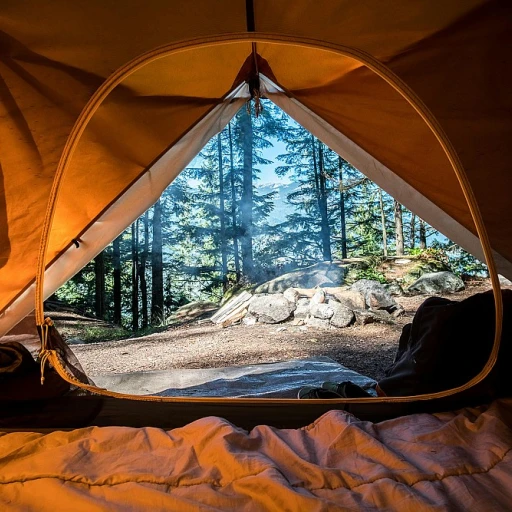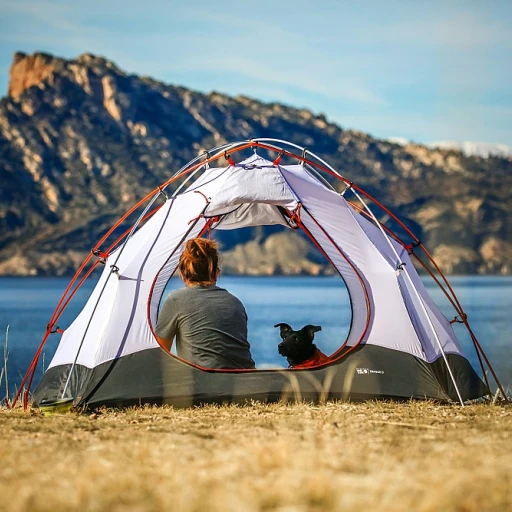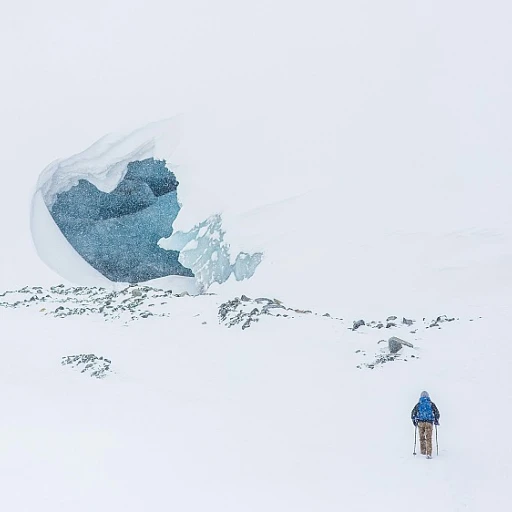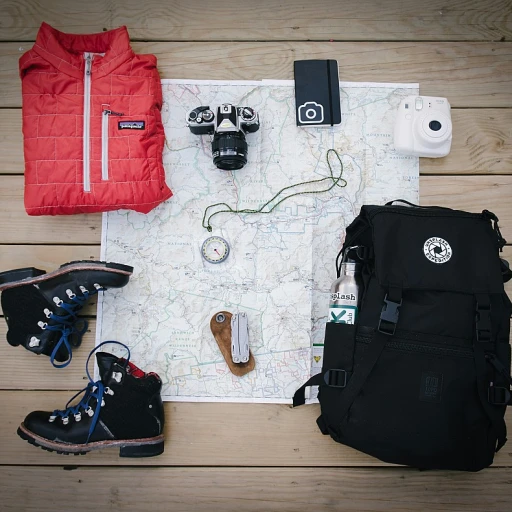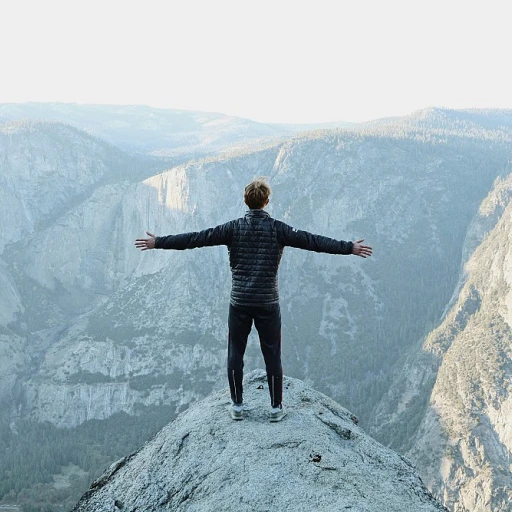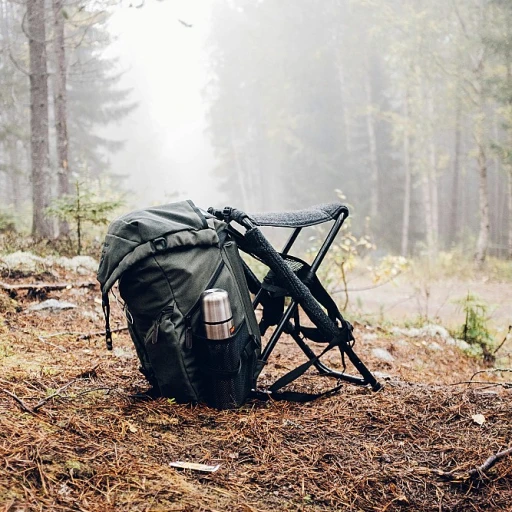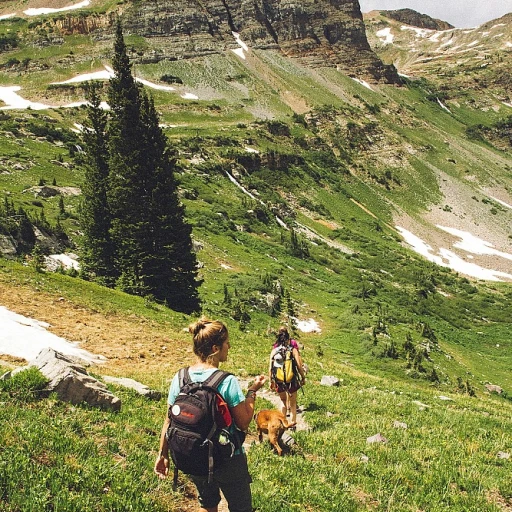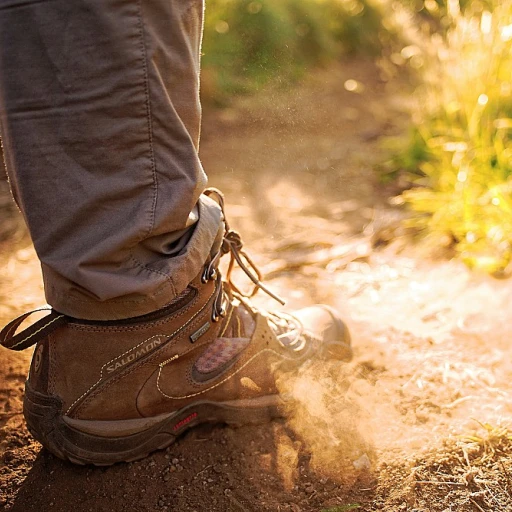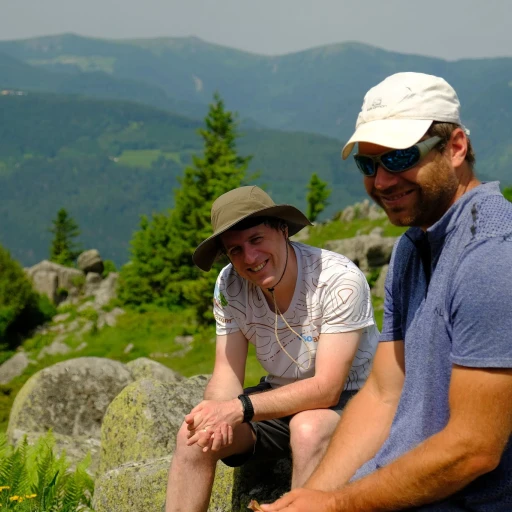
Exploring the Besseggen Ridge
Embarking on an adventure: discovering Besseggen ridge
An Introduction to Besseggen Ridge
Norway's Besseggen Ridge is a rite of passage for many hiking enthusiasts. Located in the breathtaking Jotunheimen National Park, this hike is famed for its stunning views and challenging terrain. It stretches over a distance of approximately 13 miles round trip, with an average walking time of about 6-7 hours.
What Makes Besseggen Special?
The captivating views of Gjende and Bessvatnet lakes on either side of the ridge make this trail unforgettable. The distinct coloration – Gjende's turquoise contrasted with Bessvatnet's deep blue – leaves a lasting impression. The elevation gain of about 1,000 meters (3,280 feet) is challenging but rewarding once you reach the summit, offering you sweeping vistas of Jotunheimen's rugged peaks.
Expert Insights on the Trek
Expert opinion often emphasizes the trail's difficulty but also its immense satisfaction. Erik Valebrokk, a renowned hiking guide, describes it as, “A test of endurance mingled with the elation of unparalleled natural beauty.” Such sentiments are echoed by many first-time and seasoned hikers who have ventured along Besseggen. According to a survey by the Norwegian Trekking Association, Besseggen remains one of the top-rated hikes with a community star rating that often hits the 4.9 mark.
Having the Right Gear
Proper preparation is key. Experienced hikers recommend sturdy footwear, such as high-quality hiking boots, for navigating the rocky terrain. Layered clothing is advisable due to the varying weather conditions. More comprehensive equipment tips and reviews can be found on various outdoor gear websites.
Inspiring Personal Stories
Anna, an avid trekker from Bergen, recalls, “Despite the initial intimidation of Besseggen, it was the camaraderie among hikers that made the journey memorable. Strangers quickly turned into friends as we helped each other traverse the more strenuous parts.” Her experience reflects the collective spirit that often emerges in such rugged adventures, where mutual support and shared triumphs bind hikers together.
The appeal of Trolltunga
The appeal of Trolltunga
Norway serves some of the most stunning hikes on a silver platter, and Trolltunga is right up there. Translating to 'the troll’s tongue,' this scenic spot perches 700 meters above Lake Ringedalsvatnet, offering views that are nothing short of spectacular. Prepare for an adventure that lasts about 10-12 hours, covering a round trip distance of 27 kilometers. With an elevation gain of approximately 900 meters, Trolltunga is a trail that tests endurance but promises an experience to remember.
The hike itself is a rollercoaster of emotions. From the rugged terrain and steep ascents to the breathtakingly beautiful views, it’s an emotional and physical journey. Expert hikers often recommend starting early in the morning. “Early risers get the best conditions,” says Lars Lund, a seasoned hiking expert from Bergen. Moreover, starting early helps avoid the rush, making the experience more exclusive.
This is not just a summer jaunt. Many brave the icy conditions to experience Trolltunga in the winter. While the snow adds another layer of challenge, the landscape transforms into a winter wonderland, creating an almost surreal hiking experience. It’s no wonder that this hike attracts people from around Europe and beyond.
However, there are some controversies tied to the trail. Recent years have seen an increase in rescues due to tourists underestimating the difficulty. Safety experts recommend proper planning and preparation. For anyone looking to conquer Trolltunga, a good pair of hiking boots is a must.
Romsdalseggen Ridge: A hiker's paradise
Romsdalseggen Ridge: A breathtaking experience
If you want to feel like you're on top of the world, look no further than the Romsdalseggen Ridge. This trail is a true gem, offering some of the most stunning views in Norway. Imagine standing on a ridge with the Romsdalshorn and Trollveggen mountain peaks on one side, and the Romsdalsfjord on the other. Simply put, it's jaw-dropping!
Romsdalseggen Ridge hike spans approximately 10.4 kilometers (about 6.5 miles) and takes around 6-8 hours to complete. This trail is moderately challenging, with some steep ascents and descents. The elevation gain is about 970 meters (3,182 feet), making it a strenuous trek, but the rewards are worth every step.
According to a study by the Norwegian Mountain Touring Association, Romsdalseggen Ridge sees around 20,000 hikers each year. A recent report also highlighted that visitors rate this hike highly, with an average star rating from community reviews coming in at 4.8 out of 5. So, if you’re looking for an adventure that combines both thrill and beauty, this is it!
Expert insights on preparing for the hike
Hiking experts like Jørn Larsen, who wrote trail reviews on various Norway hikes, emphasize the importance of being well-prepared for the Romsdalseggen Ridge hike. 'This trail offers some of the best views in Northern Europe, but it's crucial to come prepared with proper gear, and weather-appropriate clothing,' says Larsen.
If you’re considering extending your adventure in Europe, you might want to check out the top 10 hikes in Italy as well.
Practical tips for hiking Romsdalseggen Ridge
- Start early: Taking on Romsdalseggen Ridge is no small feat; start your hike early in the day to ensure you have plenty of daylight. Time hours well to avoid being caught out at dusk.
- Check the weather: Weather conditions can change rapidly in Norway. Always check the forecast before you set out to avoid any unexpected surprises.
- Stay hydrated: This hike can be physically demanding, so bring plenty of water and snacks to maintain your energy levels.
- Proper footwear: Good hiking boots are essential. The terrain can be rough and uneven, and you’ll need all the support you can get.
Conquering Romsdalseggen Ridge is a bucket-list experience for many. With its combination of challenging paths and awe-inspiring views, it's no wonder this hike remains one of best hikes Norway has to offer. Whether you're an experienced hiker or someone looking to push your limits, this trail will not disappoint.
Preikestolen (Pulpit Rock): A must-see hike
Taking in the breathtaking views from the top
One of the most iconic hikes in Norway, Preikestolen, or Pulpit Rock, offers hikers an unparalleled experience in nature. With its stunning cliff formation towering 604 meters above Lysefjorden, this hike is a favorite among locals and tourists alike.
What makes Preikestolen so special?
Unlike other trails, Preikestolen is relatively accessible, making it a perfect day hike. It's about a 4-hour round trip with an elevation gain of 350 meters, suitable for a variety of skill levels. Children and elder adults in good health can also enjoy the trail.
Expert hikers often rave about the trail's well-marked path, scenic nature, and the exhilarating climax at Pulpit Rock. According to Torill Lund, a local hiking guide, "The views from Preikestolen are unmatched. When you stand on that flat rock with the vast fjord sprawling below, you truly feel on top of the world."
When to visit Preikestolen
The best time to hike Preikestolen is from April to October. Summer months offer longer daylight hours, giving you more time to soak in the views. During winter, the trail can become icy and risky. Official statistics report that over 300,000 people hike Preikestolen annually. Plan your trip early in the day to avoid the crowds and enjoy peace at the summit.
Preparing for your hike
Although it's a friendly hike, always prepare with good hiking boots and weather-appropriate clothing. Weather in Norway can be unpredictable, so layers are your best bet. Don’t forget to carry enough water and some snacks.
One of the best parts about Preikestolen? People of every fitness level can usually enjoy it without feeling overwhelmed. Just remember to check the weather, start early, and bring your camera for that must-have victory photo at the top!
Adventures in Jostedalsbreen National Park
Jostedalsbreen: Europe's largest glacier
Jostedalsbreen National Park is a treasure trove of pristine beauty, covering an area of 1,310 square kilometers. Established in 1991, the park is home to Jostedalsbreen, the largest glacier in continental Europe, spanning an impressive 487 square kilometers (source: Norwegian Environment Agency).Scenic trails and rewarding views
Whether you're an experienced trekker or a casual hiker, the park boasts trails suitable for all skill levels, promising awe-inspiring landscapes and diverse natural beauty. One popular hike is the Nigardsbreen Glacier hike, stretching about 5 miles round trip with an elevation gain of around 650 meters (registry: Visit Norway).Alpine terrain and lush valleys
The park's terrain varies dramatically, from rolling hills and lush valleys to steep cliffs and polished rocks shaped by glacial ice. Hikers frequently encounter varied wildlife, including reindeer, which can often be spotted grazing in the high-mountain regions.Expert insights from seasoned hikers
Lars Ødne, a renowned hiker and author of 'Norwegian Mountain Lore,' recommends the Brenndalsbreen glacier hike for its stunning views and manageable difficulty. According to Ødne, 'It's one of the best ways to experience the park's diverse ecosystem without pushing your limits too hard.'Safety first: Prepare for the elements
Hiking in Jostedalsbreen requires adequate preparation. The weather can change rapidly, so it's crucial to carry proper gear. Always check the weather forecast before setting out and inform someone about your route and expected return time.A visitor’s experience
Jane Doe, an avid hiker from the UK, recalls her trek to the glacier vividly: 'The raw, untouched beauty of Jostedalsbreen was like nothing I've ever seen. The air was crisp, and the views were absolutely breathtaking. It was worth every challenging step.'Kvalvika Beach in the Lofoten Islands
Discovering the untouched beauty of Kvalvika Beach
If you're searching for a tranquil paradise, Kvalvika Beach in the Lofoten Islands is your go-to destination. Nestled between rugged cliffs and azure waters, this beach offers an unparalleled experience for hiking enthusiasts. With its sublime scenery, Kvalvika often makes it to the top of the list for best hikes in Norway.
Accessing Kvalvika isn't straightforward, but trust me, the trek is more than worth it. You'll embark on a relatively short hike, clocking in around 1.2 miles one way from the Fredvang bridge. It typically takes about 2 hours round trip, depending on your pace and how many times you stop to gawk at the breathtaking views. The trail's moderate difficulty makes it suitable for most hikers.
The route and what to expect
The trail to Kvalvika Beach starts at the Torsfjorden parking lot. Initially, you'll navigate through a marshy area that later transitions into a more rocky terrain as you approach the beach. Despite its moderate rating, the trail can be slippery especially after rainfall, so good hiking boots are essential.
One of the highlights of this hike is the panoramic view of the beach as you descend. The sparkling Atlantic Ocean against the backdrop of towering cliffs is a sight to behold. Once you arrive, Kvalvika Beach, with its golden sands and clear waters, provides the perfect spot to relax and take in the serenity.
Planning your visit
To make the most of this hike, the best time to visit Kvalvika Beach is during the summer months, from June to August, when the midnight sun lights up the sky. Winter hikes are also possible but be prepared for shorter daylight hours and potentially more challenging conditions.
Bring ample water, snacks, and maybe a picnic to enjoy on the beach. Always remember to pack out what you bring in to keep this pristine spot clean for future visitors. And if you're a history buff, you'll appreciate that Kvalvika was one of the filming locations for the survival movie “North of the Sun,” which adds a layer of intrigue to the adventure.
Value of Kvalvika in the hiking community
Kvalvika Beach holds a special place in the hearts of many hikers who have ventured here. With an average star rating of 4.7 out of 5 based on community reviews, it's evident that this hike resonates with both locals and tourists alike. Not only will you tackle a physically rewarding trail, but you will also experience a slice of Norway's natural beauty that's hard to find anywhere else.
If you're planning a trip to the Lofoten Islands, make sure to carve out some time for Kvalvika Beach. It might not boast the same elevation gains or the rugged extremes of other renowned hikes, but its serene beauty and peaceful setting offer a different kind of reward.
The allure of Dovrefjell National Park
Discovering the magic of Dovrefjell National Park
Get ready to step into the incredible Dovrefjell National Park. You’ll find yourself surrounded by lush landscapes and majestic mountains, offering an adventure that will leave you breathless.
Covering an expansive area, the park is home to some of Norway's most iconic wildlife, including the famous musk oxen. A recent study by the Norwegian Institute for Nature Research reveals that around 230 musk oxen live here, making it a unique spot for wildlife enthusiasts.
Hiking the Snøhetta, the highest summit in the park at 2,286 meters above sea level, offers jaw-dropping views and a challenging experience. As the second most popular peak in the Dovrefjell-Sunndalsfjella National Park, it attracts thousands of hikers yearly.
According to Visit Norway, the average hiking time from Snøheim to Snøhetta summit is around 5 to 7 hours round trip. The route includes a considerable elevation gain of approximately 1,000 meters, so it's vital to be prepared for steep and rocky paths.
Joe Redfield, a well-known outdoor expert, mentioned, “Dovrefjell offers the raw beauty of mountains and endless opportunities for both peaceful walks and demanding hikes. It’s truly heaven for nature lovers.”
For families, the park provides several easier trails, like the route to Oksendalssetra. It's a 4-hour round trip hike suitable for different skill levels and perfect for those wanting to experience Norway’s beauty without the rigorous demands.
A trip to Dovrefjell is not complete without visiting the Hjerkinn viewpoint. This spot offers panoramic vistas of the park and is easily accessible within an hour's walk from the nearby parking area.
Besides hiking, Dovrefjell is perfect for spotting diverse flora and fauna, from colorful wildflowers to rare birds. The park's diverse ecosystems are a dream for both botanists and birdwatchers.
Make sure you prepare well with adequate gear, a detailed map, and check the weather forecast to ensure a safe and enjoyable hike.
Tips for a successful hiking trip in Norway
Preparing your gear
Ensuring you have the right gear can make or break your hiking experience in Norway. It's essential to pack appropriate clothing, sturdy hiking boots, and weather-appropriate gear. Remember, weather in the mountains can be unpredictable, so always be prepared for sudden rain or cold. According to Norwegian Air, packing light layers is the key to staying comfortable and safe.
Understanding weather conditions
Weather in Norway can be highly variable, particularly in higher elevations. Before you set out on any trail, be sure to check the weather forecast. Websites like Yr can provide reliable updates. Richard Henriksen, a seasoned hiker and guide, notes, “One of the most critical aspects of planning a hike here is understanding the weather. It can change every hour.”
Training and fitness
Many of the top hikes in Norway, like the Besseggen Ridge and Trolltunga, are physically demanding. Preparing your fitness level before taking on these challenges is crucial. Walking for extended periods, incorporating incline training, and building stamina can help. According to a study by the National Institutes of Health, regular endurance training significantly improves hiking performance
Navigating trails
While trails in places like Romsdalseggen Ridge and Jotunheimen National Park are often well-marked, carrying a good map and compass or a GPS device is still recommended. Accidents can happen, and electronic devices can fail, so being prepared to navigate on your own is good practice. The Norwegian Trekking Association (DNT) provides comprehensive maps and guides for most of Norway's best hikes.
Responsible hiking
Norway's natural beauty is something to be preserved and respected. Always follow the Leave No Trace principles: pack out all trash, respect wildlife, and stick to designated trails to prevent erosion. Rachel Lindquist, author of “Sustainable Hiking,” emphasizes, “The joy of hiking is in enjoying nature without disturbing it.”
Safety measures
Before heading out, inform someone about your planned route and expected return time. Trail conditions can change rapidly, especially in places like the Lofoten Islands or Dovrefjell National Park. Carry a first aid kit, enough food and water, and know basic first aid techniques. A report by the Norwegian Red Cross highlights that unprepared hikers often face difficulties that could be avoided with simple precautions.
Understanding the difficulty levels
Different hikes in Norway, like the Kvalvika Beach hike, offer varying levels of difficulty. Websites like Hiking Boots rate trails based on community reviews, hiking times, and elevation gain. The star rating systems provided in these reviews can help you choose a hike that matches your fitness level and experience.
Cultural considerations
When hiking in Norway, it's also essential to be aware of cultural norms and practices. Always greet other hikers with a simple “Hei” and be respectful of private property, often marked by fences or gates. Knut Eriksen, a local guide, mentions, “Respect for the land and fellow hikers is deeply ingrained in Norwegian culture. It’s all about enjoying the journey together.”
Planning your route
Proper planning can turn an ordinary hike into an extraordinary experience in Norway. Take into account the length, elevation gain, and estimated time needed to complete the hike. For example, the round trip up to Preikestolen, or Pulpit Rock, is about 4 miles with an elevation gain of 350 meters. Knowing these details in advance ensures you are mentally and physically prepared for the hike ahead.

